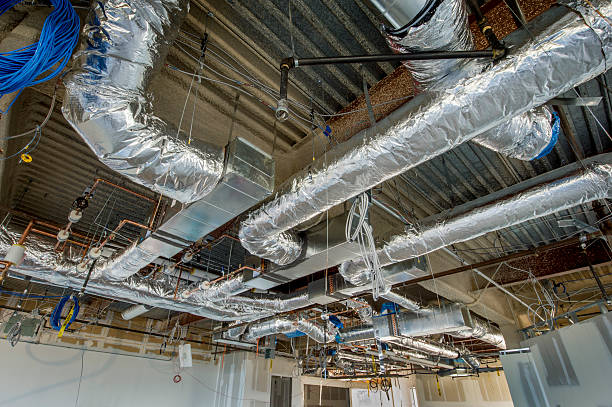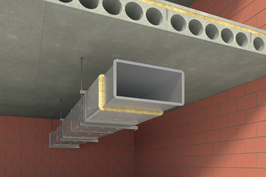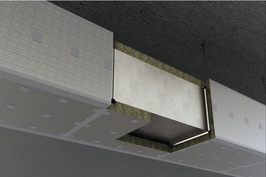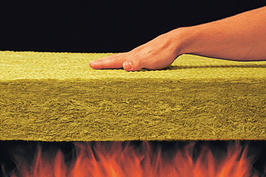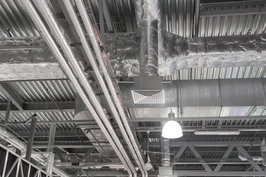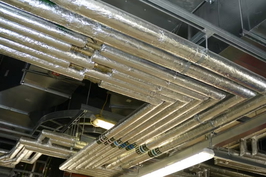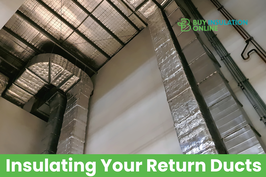Similar Categories
Let's Talk About Ducting Insulation
When it comes to improving the efficiency of HVAC systems, duct insulation should be a top priority. Poorly insulated air ducts can have a significant impact on energy efficiency and comfort, resulting in higher energy costs and discomfort for occupants.
Duct insulation can help to reduce energy loss and improve temperature control, providing many benefits to HVAC systems. In this article, we will look at the different types of duct insulation available, the benefits of using it, and how to install it correctly.
We will also discuss the importance of performing regular maintenance and inspections to ensure that the insulation is working correctly and efficiently.
By understanding the benefits of duct insulation and taking the necessary steps to install it correctly, you can make sure that your HVAC system is working as efficiently as possible
Where to Buy Duct Insulation?
We believe you shouldn't have to worry about trying to open trade accounts with insulation merchants or having to run around trying to find the best duct insulation companies. Having quality advice on hand to help you every step of the way is usually required with such a niche subject..
That's why we are different. Buy Insulation Online will offer you trade prices whilst giving you free advice from experts who have been in the market for decades. Find duct lagging suppliers near me by asking our customer service where our depots are and you can even pick it up yourself free of cost, usually same day!
We offer you a one-stop shop to buy duct board, duct wrap, fire-rated duct insulation and all the ancillaries you would need to get the job done. Look no further than where to buy duct insulation.
It is also possible to hire a professional thermal insulation contractor to install the insulation for you, although this will likely cost a lot more than doing it yourself. You can also buy pre insulated ducting from us at price on application.
What regulations are there regarding duct insulation in the UK?

In the United Kingdom, there are several legal requirements that apply to the insulation of ducting
The Building Regulations 2010: These policies set out the minimum standards for the design and construction of buildings in the UK, including requirements for insulation. According to Part L (Conservation of Fuel and Power) of the Building Regulations, ducting should be insulated to a minimum thickness of 25mm if it is located within a building's thermal envelope (i.e., within the structure's walls, floors, and roof).
The Energy Performance of Buildings Directive (EPBD): This regulation sets out energy performance standards for buildings in the European Union, consisting of requirements for the insulation of ducting. According to the EPBD, ducting needs to be insulated to a minimum thickness of 25mm if it lies within a building's thermal envelope.
The F-Gas Regulations: These guidelines set out requirements for the use and handling of fluorinated greenhouse gases (F-gases), which are used in some types of air conditioning and refrigeration systems.
According to the F-Gas Regulations, any ducting that is used in conjunction with an a/c or refrigeration system must be insulated to a minimum thickness of 25mm.
It is essential to note that these are minimum requirements, and it might be suggested to use thicker insulation in certain situations to enhance energy performance and minimize heat loss.
BS5422
BS5422, officially known as "BS5422:2023 Method for specifying thermal insulating materials for pipes, tanks, vessels, ductwork and equipment operating within the temperature range -40°C to +700°C", is a British Standard issued by the BSI Group.
This standard provides guidelines and procedures for specifying thermal insulating materials that are used for a variety of applications, including ductwork. The document covers guidance for insulating pipes, tanks, vessels, ductwork and other equipment which operates in the temperature range of -40 degrees Celsius to +700 degrees Celsius.
The standard is designed to assist in determining the most appropriate and effective insulation thickness to use in various situations. It takes into consideration factors like the type of material being insulated, the temperature at which the equipment operates, and the environmental conditions where the equipment is located.
The purpose of BS5422 is to help ensure the effective and efficient use of H&V insulation to minimise energy loss, improve safety, and help maintain the desired temperatures in various industrial and building services applications.
ASHRAE in the US
The equivalent in the US are the ASHRAE standards, which are used to specify insulation thickness for ducts to minimise energy losses, control condensation, and maintain comfort conditions inside buildings. Insulation thickness can depend on various factors such as duct location (inside or outside the conditioned space), duct material, operating temperature, ambient conditions, and energy efficiency requirements.
Specifically, in the case of duct insulation, ASHRAE Standard 90.1 includes tables with minimum required R-values (a measure of thermal resistance) for duct insulation in different scenarios. The standard takes into account factors such as whether the ducts are located in conditioned or unconditioned space, the type of HVAC system, and the climate zone.
The History of Ducting Insulation
The history of duct insulation can be traced back to the early 1900s when the first AC ducting systems were developed.
At that time, the primary concern was with maintaining a comfortable indoor temperature. As a result, early galvanised metal ducts were often uninsulated, which led to significant heat loss or gain through the ducts.
Over time, however, it became clear that insulating air ducts could improve the efficiency of HVAC systems. This led to the development of various insulation materials and techniques for insulating air ducts. Today, duct insulation is a commonly used practice in both residential and commercial buildings and is an important part of an HVAC insulation strategy.
Why insulate ductwork?
Ducts must be insulated to meet the building requirements in all facilities. While duct insulation is mainly carried out in commercial and industrial facilities, it is equally important in homes or residential applications.
A properly insulated duct system can give you many benefits:
- Saves energy costs
- Lowers Carbon Footprint
- Healthy indoor air quality
- Prevents Condensation Forming
- Soundproof ductwork
- Maintain Comfortable indoor temperature
- By insulating ducts, you increase the lifecycle of a duct system.
Let's take a look at some of these benefits in detail -
1. Energy efficiency:
Duct insulation helps to keep the temperature of the air that is being transported through the ducts consistent, which can help to reduce the energy needed to heat or cool a building. This can result in lower energy bills and a more environmentally friendly home or business.
2. Lower Carbon Footprint:
Duct insulation can help to lower a building's carbon footprint. By reducing the amount of energy needed to heat or cool a building, it can help to reduce the overall carbon emissions of the building. This is because the production of electricity and heating fuels, such as fossil fuels, generates carbon dioxide emissions.
3. Improves Indoor Air Quality:
Properly installed duct insulation can indoor air quality and reduce the amount of outside contaminants that enter a building through the ducts. If it's properly sealed using aluminium foil tape, duct insulation can help to reduce the number of pollutants that enter the ducts which go on to be proliferated throughout the building into the air.
4. Prevents Duct Condensation:
Condensation is formed when the air temperature inside a duct is higher than the ambient temperature in the room or space through which it travels. It is very common to have ducts which pass via cold areas such as attic spaces, false ceiling voids and risers. Air ducting insulation will help prevent condensation. Air Conditioning Insulation works because it helps to stop the cold air from coming into contact with the surface of the warm duct. By insulating your ductwork, condensation will not form as a result of having a physical barrier in the form of insulation.
5. Acts as Duct Acoustic Insulation:
Duct insulation can act as acoustic insulation and reduce noise by absorbing sound waves and vibrations. When sound waves hit the surface of the insulation material, they cause the fibres of the insulation to vibrate. This vibration absorbs the energy of the sound waves, which reduces the amount of noise that is transmitted through the ducts. Overall, using duct insulation can help to reduce the amount of noise that is transmitted through the ducts, which can be especially beneficial in multi-unit buildings or if the ducts are located in an area where noise could be an issue.
6. Lagging Ducts Helps Maintain Comfortable Temperatures:
Wrapped ductwork can help to maintain a comfortable indoor temperature by reducing the amount of heat that is lost or gained through the ducts. When air is being transported through the ducts, it can come into contact with the cooler surface of the ducts, which can cause the temperature of the air to drop. Insulating the ducts can help to prevent this heat loss, which can help to maintain the temperature of the air being transported through the ducts. In addition, duct insulation can also help to reduce temperature fluctuations and drafts within a building. When the temperature of the air being transported through the ducts is more consistent, it can help to reduce temperature fluctuations and drafts within the building, which can improve the overall comfort of the space.
7. Duct Insulation Prolongs the Life of Your HVAC System:
Duct insulation can help to prolong the life of your HVAC system by reducing the amount of stress on the system. When air is being transported through the ducts, it can come into contact with the cooler surface of the ducts, which can cause the temperature of the air to drop. This can result in the HVAC system having to work harder to maintain the desired temperature, which can put additional strain on the system. Insulating the ducts can help to prevent this heat loss, which can reduce the amount of strain on the HVAC system and help it to last longer. HVAC insulated ducting can help to reduce the amount of strain on the system and improve its energy efficiency, which can help to prolong its life and reduce the need for costly repairs.
![ducting insulation]() Is Duct Insulation Worth It?
Is Duct Insulation Worth It?
Absolutely! Duct insulation can help reduce energy costs by preventing heat or cold losses from ducts that carry conditioned air throughout a home. It also helps keep noise levels down and improves the comfort of occupants in the living space. Overall, installing adequate duct insulation can save up to 20% on heating and cooling bills. What's not to like about any of that?
Like any type of insulation if you're prepared to invest a little upfront time energy and money you can save big over the long term. Your life will be made more comfortable and better for all the reasons listed previously. Your HVAC system will live longer and with less maintenance.
If you would like to see a video we have made about what insulation ductwork can require, you can find it here Benefits Of Duct Insulation
Factors to Consider When Choosing the Right Duct Insulation Solution
Assessing the thermal insulation requirements for your ductwork
When choosing duct insulation, it is essential to consider the level of thermal insulation required for your specific application. Factors affecting the thermal insulation requirements include the geographic location of the building, the HVAC system design and size, and the indoor temperature setpoint. An insulation expert can help assess these factors and recommend suitable duct insulation products to meet the desired thermal performance.
Selecting the suitable insulation thickness for optimal performance
The thickness of duct insulation has a direct impact on its effectiveness; thicker insulation provides better performance but may require a larger space for installation. It is crucial to weigh these considerations and choose a suitable insulation thickness that strikes the right balance between performance and installation convenience while ensuring compliance with local building regulations and energy efficiency standards. We supply thicknesses ranging from 25mm, 40mm, 50mm and up to 150mm for products like lamella HVAC insulation board.
Understanding the role of acoustic insulation in reducing noise
Acoustic insulation is another crucial consideration when selecting duct insulation. The right insulation product can significantly reduce the noise generated by the HVAC system, enhancing occupant comfort and satisfaction. Ensure that you choose a duct insulation material with proven acoustic properties to optimise noise reduction in your commercial or residential space.
What ducts and pipes do you use insulation on?
Most of the time duct lagging will be used on HVAC ventilation ductwork but there are other applications where duct insulation, in particular duct wrap can be used. Heres a short list below
- Soil and Vent duct pipe insulation, usually for acoustic insulation
- Other Waste Pipes To Reduce sound transmission
- Air Conditioning Duct Insulation
- Furnace Duct Insulation (Specialist Fire Rated Insulation Needed)
- Kitchen Extract Ductwork (Commercial kitchens need Specialist Fire Rated Insulation)
- Flue Pipe Insulation
- Heat duct insulation wrap
- Hot Air Duct Insulation
- Flexible Ducts
- PVC Ducts
- Chimney Ducts
- Automotive Paint Booth Exhaust Ducts
- Residential Dryer Ducts
- Industrial Exhaust Ducts
- Gas Boiler Flue Ducts
- Oil Furnace Flue Ducts
- Wood Stove Flue Ducts
For pipes, vessels, aircon equipment and valves, ductwrap can be used for the following applications;
- Large Bore Pipework such as over 300mm in diameter
- Chilled water valve insulation to prevent condensation
- Any other chilled or cold surfaces that may condense water vapour
What Duct Insulation Types Are There?
Duct insulation is typically made from a variety of materials, including fibreglass, mineral wool, PIR, nitrile rubber and phenolic foam. These materials are chosen for their ability to thermally insulate rigid ducts effectively, as well as their durability and resistance to fire.
They typically are supplied in rolls, as is the case with insulated ductwrap or duct insulation sheets such is the case with Kingspan Thermaduct or Rockwool Duct Boards.
Each material has its own set of benefits and drawbacks. The right fit for you depends on what's most important to you, such as heat loss reduction, acoustic insulation, condensation and moisture control.
We offer you only the best, and just so you can make an informed decision, we have listed all of the best duct insulation products and their features below.
We also have a great video on our Youtube channel about different types of duct insulation which can be found here - Types Of Duct Insulation Materials
Duct Wrap Insulation
Ductwrap or duct wrap insulation is an insulation roll made of fibreglass or mineral wool. Flexible in nature and in application, it is primarily used as HVAC insulation wrap but can be used as soil and vent pipe insulation amongst other things. It is available in rolls and has excellent thermal and acoustic insulation properties, making it an ideal choice for various applications. Ductwrap insulation is particularly suitable for HVAC systems in residential and commercial buildings with limited space, as it can be installed around pipes and other obstructions with ease.
Ductwrap is very easy to install and can be used on ductwork of all shapes and sizes. At Buy Insulation Online, we store duct wrap insulation from the two main players in the HVAC insulation market - Rockwool and Isover.
Isover Climcover Glass Duct wrap Insulation
Fibreglass duct insulation rolls from Isover insulate ductwork both thermally and acoustically. This product has a high level of fire resistance as well. Isover's fibreglass ductwrap provides a tidy finish around ductwork.
They are lightweight, flexible insulation rolls that are simple to install. Isover Climcover has a factory-applied aluminium foil front that acts as a vapour barrier.
They're best employed to insulate both inside and outside the building's oval ducting. An additional cover or cladding may be necessary when used outside the structure.
Isover climcover has been a crowd favourite here at Buy Insulation Online. It is perhaps the cheapest duct insulation roll, based on per square metre price.
Rockwool Duct Insulation
Rockwool duct wrap is a 1000mm wide stone wool insulation roll, designed specifically to stop heat loss in ducts. They have factory-applied foil-facing on the exterior or outside and are constructed of mineral wool.
They provide ducting, cold water storage, feed, and expansion tanks with exceptional thermal insulation and soundproofing.
Rockwool Ductwrap offers uncompromised quality, and when properly fitted, stops air leakage and limits the entry of contaminants into the H&V system.
Bubble wrap duct lagging insulation
The EcoTec Duct Insulation Kit is your ultimate answer for optimised HVAC systems and lowered energy costs. This all-inclusive insulation kit is created to counteract heat loss, preserve temperature, and boost the overall performance of your HVAC system.
At the core of the ducting insulation kit is the Airtec double bubble insulation, a 4mm thick thermal membrane consisting of a layer of air-filled bubbles sandwiched between aluminium foils on either side. The reflective attribute of the aluminium foil conserves energy by reflecting heat back into the ductwork, while the bubble insulation layer aids in sustaining the temperature of the ductwork.
This innovative duo offers superior thermal performance, reflecting radiant heat and curbing heat transfer, thereby reducing energy waste. With a slender profile of just 4mm, this duct insulation kit is perfect DIY'ers for use as insulation around ductwork where space is limited.
Duct Board Insulation
Ducting Boards come with factory-applied foil-facing to act as a moisture barrier and to reflect radiant heat back towards or away from the ductwork. Due to their rigid structure, duct boards are used to insulate square and rectangular-shaped ductwork.
This type of duct lagging is suitable for use as exterior duct insulation too due to its robust construction. Insulated duct boards give a solid base which to apply duct insulation cladding to.
Rockwool Aluminium-Faced Mineral Wool Duct Boards
This lightweight, semi-rigid insulation, is ideal for rectangular ductwork. Rockwool Duct boards are simple to apply and provide good thermal insulation. They have foil facings made of strengthened aluminium that gives excellent vapour resistance. Rectangular ductwork can be soundproofed using this non-combustible ducting insulation.
They are excellent for commercial and industrial applications, as it has a service temperature of up to 230°C. Rockwool insulation can be used to insulate HVAC systems, cold water storage, feed, and expansion tanks.
Air conditioning, warm air, and extractor ducts in plant rooms, boiler rooms, or outside are frequently insulated, using Rockwool duct insulation boards.
Rockwool Ductwrap: A popular thermal and acoustic insulation product in the UK market
Rockwool Ductwrap is a popular mineral wool insulation product in the UK market, known for its excellent thermal and acoustic insulation properties and ease of installation. Designed for various applications, including HVAC systems in commercial and residential buildings, Rockwool Ductwrap offers a flexible, durable solution for insulating ductwork and helping to maintain indoor comfort and energy efficiency.
Kingspan Aluminium Faced Thermaduct Boards
Kingspan thermaduct solution is made with a high-performing rigid thermoset polyisocyanurate (PIR) core and is excellent for rectangular, circular, and flat oval ductwork insulation. It's also used for HVAC insulation and other construction projects.
Thermaduct insulation boards can be applied across projects, be it - industrial, residential or commercial projects. They provide a better finish when compared to non-rigid glass or rock mineral fibre ductwrap. Their factory-applied aluminium facings make thermaduct insulation water-resistant, hence preventing mould issues around the ductwork
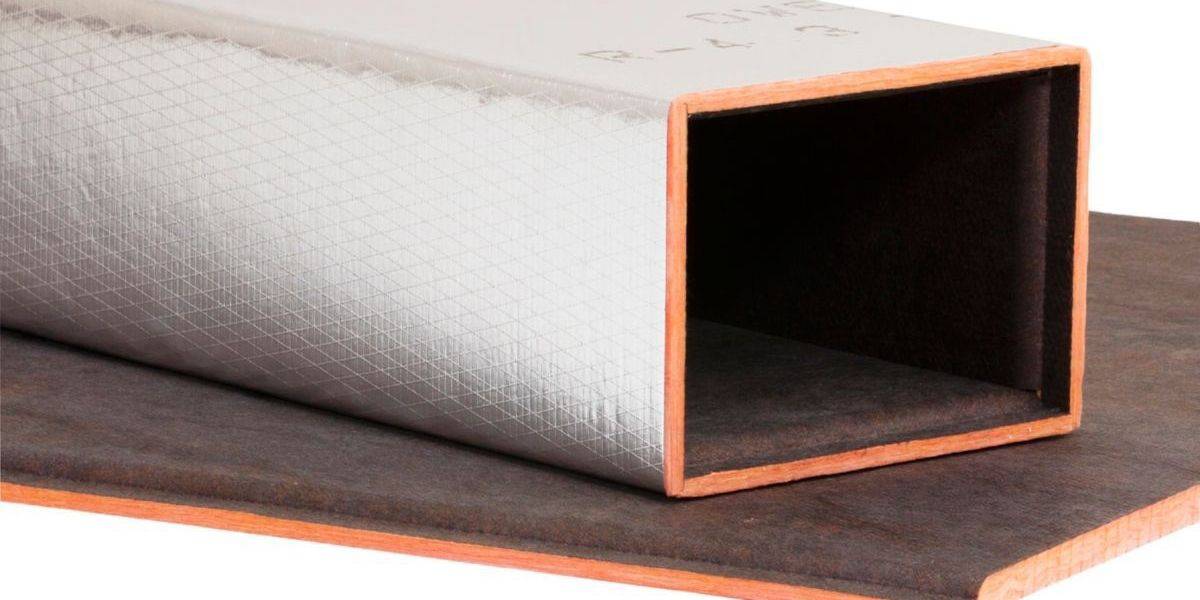
Kingspan Aluminium Faced Phenolic Insulation Duct Boards
Kingspan's phenolic duct insulation is thin, effective rigid duct insulation with a stiff thermoset phenolic insulating core. These foam boards are ideal for ducting that's rectangular and square-shaped ductwork. It provides excellent thermal insulation as well as fire resistance.
Rockwool DuoDuct Slab
If your looking for a more effective sound insulation material for ductwork, then Rockwool duo-duct insulation slab is the right choice for you. The high-density mineral wool used to make Rockwool insulation helps give superior sound insulation. Along with soundproofing, duct boards also give exceptional thermal and fire insulation
CLIMCOVER Lamella Mat
The ISOVER CLIMCOVER Lamella Mat offers both thermal and acoustic insulation for round metallic ductwork, storage tanks, and large diameter pipes. Its superior mechanical strength makes it perfectly suitable for usage at any level, either interior or exterior of a structure, as long as it's suitably covered. This semi-rigid fiberglass duct board is great for insulating tanks and vessels.
This lamella mat features a reinforced pure aluminium foil on one side, serving as a vapour barrier. The strengthening mesh enhances the aluminium's resistance to tearing and puncturing. Despite its resistance to mechanical stress, the mat maintains its flexibility, easily conforming to various shapes and components of HVAC systems. The mat's facing can serve as a shiplap, facilitating easy assembly and connection between insulation wrap pieces. Cutting the roll is straightforward with common tools like a knife.
Fibreglass Lamella Mats are produced from inorganic, chemically biosoluble materials and do not contain any substances that might contribute to corrosion or encourage microbial growth.
Preinsulated ductwork: An energy-efficient, all-in-one solution for your ventilation duct
Preinsulated ductwork is an innovative, energy-efficient solution for your ventilation duct needs. It comprises duct panels with integrated insulation, eliminating the need for separate insulation and ducting materials. Preinsulated ductwork is lightweight, easy to install, and offers excellent thermal and acoustic properties. It is also compatible with various types of duct sealing systems, ensuring optimal performance and energy savings. There are even products where there is insulation inside ductwork panels, built-in for soundproofing such as attenuators.
STÖRNCH InDuct - Pre Insulated Fiberglass Ducting
Pre-insulated ductwork is provided in lengths of 2350mm (235cm), and produced according to the standard measurements of the European ventilation market. They typically come in a round shape, but with the use of a CR ducting Transformer, they can be converted to rectangular when necessary.
These pre-insulated ducts are crafted using superior-quality materials with excellent insulating characteristics. Given they are pre-insulated, they help economise on both installation time and material costs.
Approximately 30mm of insulation in this insulated aircon ducting doesn't only offer superior thermal insulation but also creates soundproof ductwork, contributing to an efficient workplace.
Pre-insulated ducts present numerous other advantages. They are light in weight and easy to set up, making them suitable for a wide array of applications, including residential, commercial, and industrial contexts. Without the need to insulate AC ducts separately the labour time is cut down dramatically.
They are also highly resilient, and their structure is designed to resist a variety of environmental conditions, encompassing high humidity and extreme temperatures.
Simultaneously, pre insulated air conditioning ducting, is constructed to be visually appealing, offering a sleek, modern look that enhances any interior design. They come in an assortment of sizes and shapes, ensuring that you can secure the ideal fit for your HVAC system.
Key Features:
- Excellent thermal and sound insulation
- Economically efficient insulated ducting
- Saves time, labour, and material costs
- Lightweight and easy to set up
- Visually appealing with a sleek, modern look
- Available in a multitude of sizes and shapes to fit any HVAC system.
Applications:
- This pre-insulated ductwork system is exclusively designed for interior duct insulation applications.
- It's ideal for the heating, ventilation, and air conditioning ducting infrastructure of a building.
- It's NOT appropriate for use in kitchen exhaust.
KoolDuct System
Engineered for heating, air-conditioning, and mechanical ventilation systems, the Kingspan KoolDuct System is appropriate for both new constructions and renovation projects across residential, commercial, public, leisure, and light industrial sectors. It's particularly well-suited for non-ferrous applications such as hospital MRI scanning rooms, and other high-standard projects where non-fibrous insulants might be preferred.
Key Features
-
Excellent for situations where current building structures cannot support additional service loads
-
Lightweight ductwork made in sections up to 2.95m in length enables quick, single-fix installation
-
No separate insulation installation required, reducing project timeline for insulated ductwork
-
Can typically conserve 150-200mm in a single dimension
-
The need for a separate insulation layer is eliminated, enabling ductwork to be fitted directly against surfaces
-
Decreased labour and material costs, including fasteners, offer potential savings without sacrificing performance
-
Can significantly lower air-leakage rates compared to traditional rectangular sheet metal ductwork
-
Overall cost savings could be as much as 48.7% when compared to mineral fibre-insulated ductwork
-
Installation costs could be reduced by up to 22% compared to mineral fibre duct work insulation.
Flexible Insulated Ducting![ducting insulation]()
This Pre-Insulated Round Ducting Hose, comes fitted with 25mm insulated duct wrap, and is designed for use with extractor fans, air conditioner hose insulation, cooling systems, cooker hoods, and tumble dryers.
This insulated duct is excellent for ventilation systems where condensation could be an issue, such as when your ducting navigates through cold roof spaces. The glass wool insulation effectively reduces condensation when the hose passes through cooler areas like roof spaces. This product is versatile and can be used in both low and medium pressure heating, ventilation, cooling, and exhaust systems. It's manufactured in the UK using a 5 layer laminate for the inner hose and a 3 layer laminate for the outer hose.
The operating temperature range for the hose is -30°C to +150°C, The hose is approved to the M1 fire standard and complies with UK BS476 parts 6 and 7 Class 0.
Ideally suited for ducting your kitchen or bathroom extractor fan, hydroponics, in-line extract fans, tumble dryer, or cooker hoods, this flexible hose can be incorporated into long ductwork runs for a variety of uses, including whole-house ventilation, passive stack vent, air conditioning, positive pressure ventilators, HVAC, and heat recovery systems.
Fire Insulation for Ductwork
Rockwool FirePro is something we stock that gives superior fire protection to ductwork. Though most of the products we list have A1 or A2 fire ratings as per Euroclass, Rockwool FirePro is exclusively made for applications where higher fire resistance is required. Ventilation and smoke extract ducts can be protected from fire for up to two hours with Rockwool duct boards.
Installing Duct Insulation
Installation of duct insulation is not really a DIY task unless it's small-diameter ductwork which can usually be tackled using duct wrap and perhaps some mechanical fixings like lacing wire and self adhesive duct insulation pins.
For insights into installing duct insulation, please refer to our detailed article on the matter here, how to install duct insulation.
What Is PIR Foam and why should you be cautious about its use on ductwork?
Polyisocyanurate foam insulation, commonly known as “PIR,” is a type of rigid insulation sheet made from polyiso and other binders. It is used mostly in external applications such as facades, roofs, floors, and walls for thermal and structural purposes. It is also used in the interior of buildings for its superior thermal insulation properties and also its resistance to moisture.
Why is the Use of PIR Insulation On Ductwork Inside Buildings Being Discouraged?
The use of PIR insulation as internal duct insulation inside buildings is being discouraged due to safety concerns. Rigid PIR foam insulation is combustible and therefore presents a risk when used on internally located ductwork. As an alternative, there are safer materials that can be used such as phenolic foam, although they may be more expensive. The Thermal Insulation Contractors Association (TICA) is pushing for a ban on the use of PIR insulation in internal ductwork applications.
What Measures Can Be Taken to Prevent Contractors from Cutting Costs By Using Cheaper, Potentially Dangerous Materials?
To prevent insulation contractors from cutting costs by using cheaper, potentially dangerous materials, firms awarding insulation ducting contracts should carry out thorough checks that the correct insulation materials are being installed inside their buildings. Additionally, TICA (Thermal Insulation Contractors Association) urges contractors to ask more questions of their insulation contractors about the credentials of the insulation product applied.
Where can PIR foam be used on ductwork?
PIR foam is cleared to be used on external ductwork but only specialist products like Kingspan Thermaduct are cleared to be used in the specific application of PIR on exterior ducting. Always check with the manufacturer if you are thinking of using it on ductwork and never use it on internal ductwork in any circumstances.
Will Wet Duct Insulation Dry Out?
Wet duct insulation can dry out. However, it may take several days or weeks depending on the weather conditions and the type of insulation used. Outdoor duct insulation is particularly vunerable to getting wet with rain seeping in through weatherproofing and cladding.
The main problem is that the insulation will usually have a foil-face vapour barrier on it. This will prevent the moisture which is trapped within the wet duct insulation from evaporating and escaping. Therefore it will take much longer to dry out, if ever. If the ventilation duct is carrying chilled or cold air then this will also prolong the insulation being wet.
Some insulation materials, such as fibreglass, are more prone to retaining moisture than others, such as closed-cell foam. In addition, if the humidity level is high or the temperature is low, it can take longer for the insulation to dry out.
All the time the insulation is wet, it is acting no longer as an insulator but as a conductor of heat. We talked about this extensively in the blog article called What To Do When Insulation Gets Wet? Please read it as the advice given there holds true for wet duct insulation also.
If possible, it is best to remove any wet insulation and replace it with new, dry insulation as soon as possible to prevent mold growth. Make sure the duct is not holding and leaking water either as the new insulation will become immediately wet if the source of the moisture is coming from within the ductwork. Also, make sure any external duct insulation is properly weatherproofed with 5 Ply Laminate like Klasseclad external duct jacketing or PIB.
Overall, it is important to take steps to prevent wet duct insulation and to dry it out promptly if it does become wet to prevent potential problems.
Conditioning the Area Around Ductwork
Conditioning the area where your ductwork is located can have a significant impact on its performance and energy efficiency. For example, if your ductwork runs through a hot attic, it is crucial to consider options such as conditioning the attic space or installing an attic fan.
By minimising heat exposure, you can reduce the demands on the insulation and improve the overall efficiency of your heating and air systems. However, it is important to consult with local professionals who have a thorough understanding of your climate and specific market conditions to determine the best approach for your situation.
Technological Advancements and the Future
The H&V industry continues to evolve with advancements in technology, and this includes innovations in ductwork and air conditioning insulation materials. Newer technologies are being developed, such as pre-insulated ductwork and simplified installation processes, which may revolutionise the way ductwork is installed and maintained. While the cost-effectiveness and availability of these technologies remain to be seen, it is an exciting prospect that may make insulation issues a thing of the past.
Investing in Duct Insulation: Understanding Costs and Potential Savings
The initial cost of installing duct insulation might seem daunting. When you factor in the price of the insulation materials and the labour costs, particularly for professional installations, it might appear to be a significant investment. However, it's essential to look beyond these upfront costs and consider the long-term benefits that duct insulation can bring.
By reducing the loss or gain of heat in your HVAC system, insulated ducts can lower your property's overall energy consumption. This decrease in energy use translates into savings on your energy bills, offsetting the initial investment over time. Furthermore, using less energy contributes to a smaller carbon footprint, aligning with global efforts towards environmental sustainability.
The UK Market: Duct Insulation Products, Suppliers, and Building Regulations
A comprehensive guide to duct insulation products and suppliers in the UK
The UK market offers a wide range of duct insulation products and suppliers, such as Rockwool, Isover, and Kingspan, among others.
These manufacturers provide a variety of insulation solutions, including mineral wool, glass wool, and rigid foam panels, to meet different application requirements.
When selecting a duct insulation product, consider factors such as thermal and acoustic performance, ease of installation, compliance with building regulations, and your specific application needs.
Understanding the Duct Insulation UK building regulations and best practices for Ductwork Insulation
In the UK, building regulations dictate the required standards for thermal and acoustic insulation of ductwork in residential and commercial buildings.
The relevant building regulations for duct insulation include Approved Document L (Conservation of fuel and power) and Approved Document E (Resistance to the passage of sound).
To ensure compliance with these regulations and achieve optimal energy efficiency and acoustic performance, it is crucial to select and install the appropriate duct insulation products and follow professional installation practices.
Q: How do I insulate my ductwork to improve HVAC efficiency?
A: To insulate your ductwork, use proper HVAC duct insulation materials such as aluminum foil, fiberglass, or other insulating materials specifically designed for duct insulation. Wrap the insulation around the exterior of the ducts, ensuring all seams are tightly sealed, and secure with tape or other fastening methods. Insulated ductwork can significantly impact your HVAC system's efficiency and reduce the energy needed to cool or warm the air, ultimately lowering your energy bills.
Q: What is the purpose of ventilation duct insulation in HVAC systems?
A: Ventilation duct insulation is primarily used to maintain a consistent temperature within the ducts and prevent loss of heat or cold air during transport. Insulating your ducts helps the HVAC system operate more efficiently, reducing the energy needed to heat or cool your space, and thus lowering your energy bills. Furthermore, proper duct insulation can also provide a level of fire resistance and help in acoustically reducing noise from the HVAC system.
Q: What type of ductwork insulation is best for my home or building?
A: The ideal ductwork insulation for your building depends on factors such as ambient temperature, humidity levels, and the type of HVAC system installed. Common materials used for ducting system insulation include fiberglass, foil-faced insulation, and rigid foam insulation. Consult with an HVAC professional to determine the best insulation material and method for your specific needs to ensure effective insulation and an efficient HVAC system.
Q: Does insulating my metal ducts have any environmental benefits?
A: Yes, insulating your metal ducts can be environmentally beneficial. Properly insulated ductwork reduces energy consumption, which in turn lowers greenhouse gas emissions and overall environmental impact. Insulated ducts can also help maintain a stable indoor temperature, reducing the need for constant adjustment of the HVAC system, improving energy efficiency, and minimizing environmental impact.
Q: How can I insulate my HVAC ducting to prevent condensation and other issues?
A: To insulate your HVAC ducts and avoid condensation, ensure that the duct liner insulation material provides a proper vapour barrier. This can be achieved predominantly by using aluminium foil. Additionally, seal all seams and joints of the insulation tightly to minimize air leakage and moisture infiltration. Condensation can lead to mould and mildew growth, affecting the air quality and compromising the insulation's effectiveness, so proper insulation is crucial.
Q: When insulating ducts, how can I consider the size and shape of my ductwork?
A: When insulating ducts, measure the size and shape accurately to ensure appropriate insulation coverage. Insulating materials are often available in different sizes and formats, such as blankets, rolls, or rigid boards, that can accommodate various duct shapes, including round, rectangular, or square. It's crucial to choose the right insulation size and form for efficient coverage and maximum thermal performance.
Q: How can I protect my AC duct insulation from external damage?
A: Protecting your HVAC duct insulation from external damage mainly involves maintaining a secure, well-sealed system and using duct insulation cladding such as aluminium metal jacketing, PIB, Isogenopak or Ventureclad (5 Ply laminate).
Additionally, seal all joints with mastic or silicone, and inspect your ducts and insulation periodically to address any issues, such as loose seals or signs of damage, to ensure proper function and insulation effectiveness.
Q: How do insulating a/c ducts affect my energy bills?
A: Insulating your ventilation ducts effectively can have a significant impact on your energy bills. Well-insulated ducts help maintain stable indoor temperatures and reduce the energy required to heat or cool your home, resulting in lower energy consumption and reduced energy bills. Proper insulation and regular maintenance of your heat ducting results in optimised performance and efficiency, which translates to cost savings in the long run.
Conclusion
In summary, ductwork lagging is an important component of an HVAC system and can help to improve its efficiency by regulating the temperature and flow of air within a building.
When choosing a duct insulation material, it is important to consider the type of HVAC system, the size and shape of the ductwork, and the local climate.
We are always in search of quality duct insulation products for you and are working towards increasing our stock items every day. If you do not find the product you need in our duct insulation catalogue, feel free to use the chat button, call or email us and we will do our best to source the product you need.
With every order you place with us, we plant a tree for free and also save five trees in the Amazon. That way, we help you offset your carbon and make your home more energy-efficient.
Further Reading
You can find more information on the topic of duct insulation from the links given below ;
Buy Insulation Online Duct Blogs
https://www.rockwool.com/syssiteassets/rw-uk/downloads/regulations/part-l-pipes-and-ducts.pdf
http://www.timsa.org.uk/TIMSAHVACGuidance.pdf
https://standardsdevelopment.bsigroup.com/projects/2020-00150
https://insulationinstitute.org/wp-content/uploads/2015/11/AH121.pdf












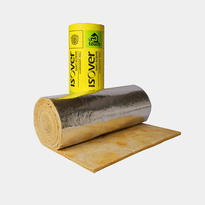
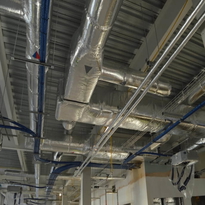

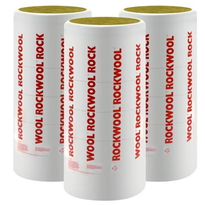
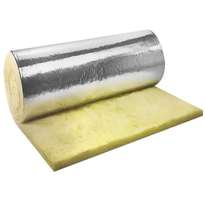
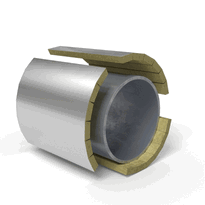

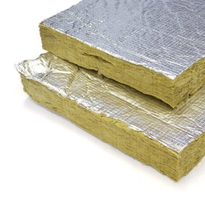
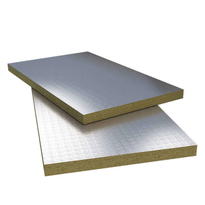

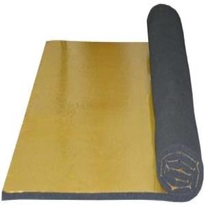
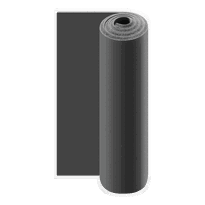


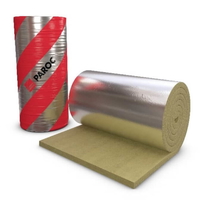

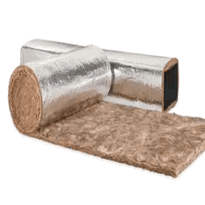
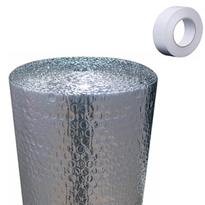
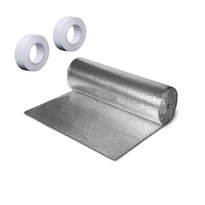
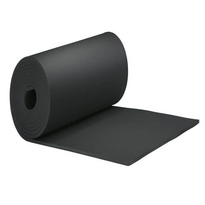
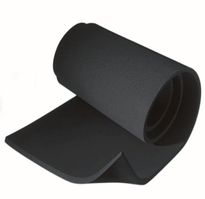

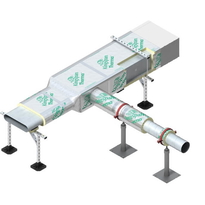
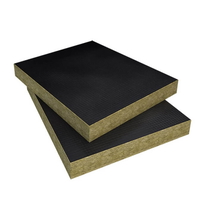
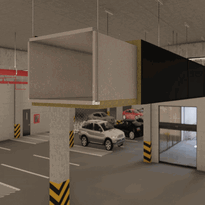


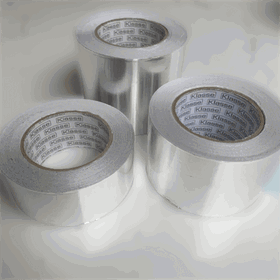
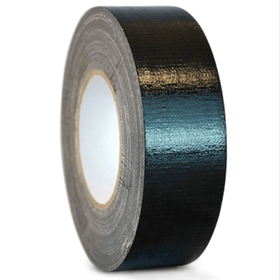
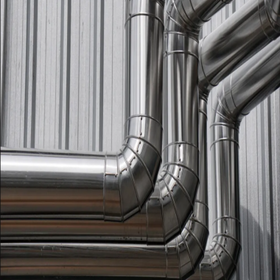

 Is Duct Insulation Worth It?
Is Duct Insulation Worth It?